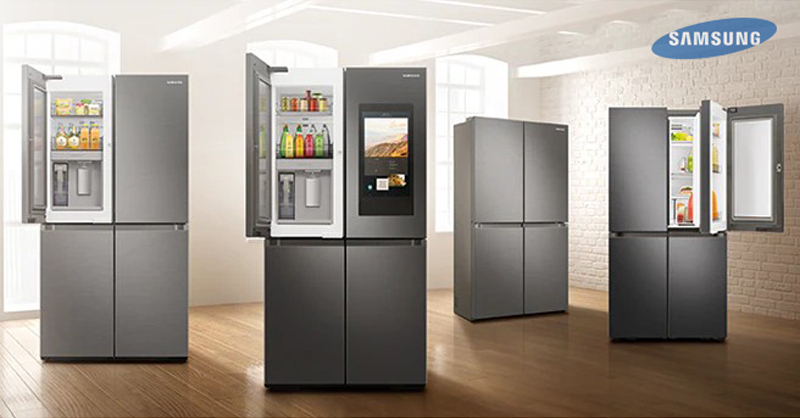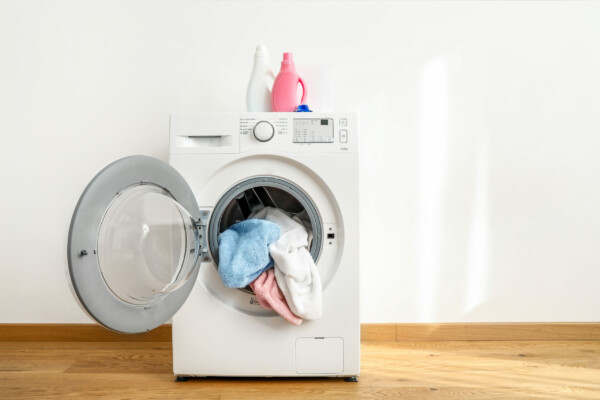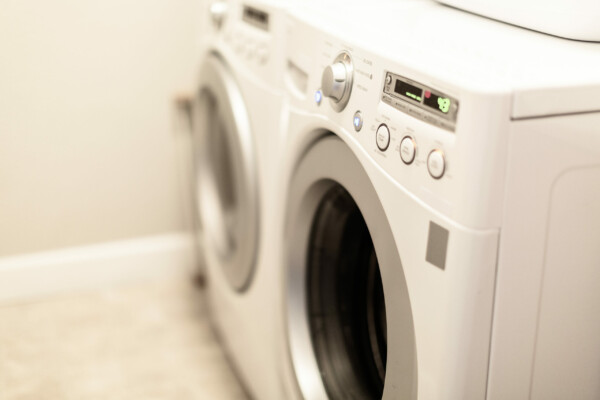7 Samsung Refrigerator Problems & Troubleshooting: How to Fix Them
Samsung Electronics is a multinational electronics and information technology company headquartered in Suwon and was established as an industrial part of the Samsung Group. The company’s activity covers four areas. They are home appliances such as refrigerators, washing machines, dishwashers, dryers, stoves, and microwave ovens.
We can’t imagine our kitchen appliances without refrigerators. And when you face any problems with the Samsung refrigerator, it always throws off.
When your Samsung refrigerator doesn’t work correctly, or something goes wrong with it, we barely understand what is happening.
Samsung Fridge Problems: Which Are the Most Common
The most common problem issues and troubleshooting are:
- Samsung refrigerator does not cool.
- Samsung fridge ice maker not making ice.
- Samsung refrigerator not defrosting.
- Fan noise in Samsung fridge.
- Samsung fridge leaking water.
- Samsung’s French door refrigerators have issues.
- Uneven temperatures & food spoilage.
Let’s explore ways to identify and address problems with Samsung fridges.
Samsung Refrigerator Not Cooling
Before we consider why the refrigerator is not cooling, finding out how it works will be interesting. A refrigerator doesn’t generate coldness on its own; rather, it extracts heat from the air passing through the refrigerator and freezer sections. To achieve this, a refrigerator relies on a compressor and fan motors. The compressor compresses the refrigerant in its gaseous state into the condenser coils, transforming it into a hot liquid. As the liquid moves through the condenser coils, they release the accumulated heat. Upon reaching the evaporator coils, the refrigerant expands back into a gas, causing the coils to become cold. To aid in heat dissipation, a condenser fan motor works alongside the condenser coils, while an evaporator fan motor draws air over the chilled evaporator coils and circulates it through the refrigerator and freezer compartments.
When a fridge is working correctly, it should maintain a consistently cool temperature around 40° Fahrenheit (4° Celsius) in the refrigerator compartment and 0° Fahrenheit (-18° Celsius) in the freezer compartment. If your Samsung appliance is experiencing difficulties maintaining a cool temperature, several common reasons may be at play:
- Dirty condenser coils. This can cause the refrigerator to stop cooling. Utilize a dedicated condenser coil cleaning brush to periodically remove debris from the coils. This helps to keep the refrigeration system in working condition.
- Malfunctioning condenser fan motor. If a condenser fan motor is defective, it cannot draw air past the coils. The fan motor can experience failure either mechanically or electrically. In this case, you can test it by yourself.
- The evaporator fan motor is defective. It means that the cold air will not be circulated into the refrigerator compartment. If the motor has an unusual noise when the fridge is running, you should replace it with a new one. You can also use a multimeter to test the motor for continuity.
- The start relay or capacitor is faulty. When these components malfunction, the compressor may struggle to cycle correctly or may not function at all. To troubleshoot this, you can use a multimeter to test the electrical continuity of the start relay, determining its functionality. Additionally, an Ohm meter can assess a capacitor’s ability to release its charge, while a capacitor meter helps define if the component possesses a sufficient capacitance rating to initiate the compressor.
- The evaporator is frosted over. Regular defrosting is essential to prevent the evaporator coils from becoming frosted over. You may have to do this manually if you own an older Samsung model. If your refrigerator is a modern one, it can use an automatic defrost system. This system includes the following: defrost heater, defrost thermostat, and defrost control. You can use a multimeter to test the heater and thermostat for electrical continuity. If the heater and the thermostat test positive for continuity, then it is likely the defrost control is defective.
- A malfunctioning temperature control board. The PCB is not functioning properly if it cannot provide direct voltage to the compressor or the fan motors. To diagnose this correctly, you should check for defective components first. You can do this by yourself, but the best is to trust professional technicians to define and fix the problems.
Understanding the operational principles of a refrigerator is fundamental before delving into troubleshooting its cooling issues. The intricate interplay of components like the compressor, condenser coils, and fan motors is crucial for extracting heat and maintaining optimal temperatures in both the refrigerator and freezer compartments.
Samsung Refrigerator Ice Maker Not Making Ice
Whether your Samsung fridge features a door-integrated ice dispenser or you manually scoop ice from the freezer compartment, the ice maker stands out as a progressively vital accessory, especially when the weather heats up. Here you can discover the main troubleshooting hits that our experts give accent to on their experience:
- If the ice cubes appear overly petite, it’s likely due to inadequate water pressure reaching the inlet valve or a restriction within the valve. A feeble water flow suggests either low water pressure in the household or a potential issue with the supply valve. However, if you observe sufficient water flow, the issue is likely a restriction within the water inlet valve. Thus, the valve should be replaced.
- If the ice maker is not making any ice at all, you should first check if there is water or ice in the tray. If no ice or water is present, be vigilant for a clogged fill tube, often caused by inadequate water pressure or a malfunctioning inlet valve.
- The temperature in the freezer compartment may be too high to facilitate ice formation. If the freezer temperature remains above 15° F and you cannot lower it, the fridge may have a cooling problem. But if the temperature is 10° F or lower, and you can see that no ice is being produced, the problem can be with the ice maker itself. It is probably defective, and it is to be replaced.
- If the ice maker is not producing ice at its usual rate, you may need to consider replacing it with a new one.
Whether it’s troubleshooting, repair, or replacement, timely intervention ensures your Samsung refrigerator continues to provide a steady supply of ice, enhancing your cooling experience.
Samsung Fridge Defrost Not Working
If you discover that your Samsung refrigerator is warmer than usual, it could indicate that your fridge is not defrosting properly or not defrosting at all. There may be a few possible reasons, the most common among them:
- If the defrost heater is not working, it can be turned out. In this case, the moisture in the air will turn into frost. You can perform a continuity check to verify that the defrost thermostat is functioning properly.
- The faulty defrost thermostat can also be the next reason your fridge is not defrosting. You can check for continuity to ensure the defrost thermostat is working.
In the event of a Samsung fridge defrosting issue, timely inspection and resolution of these common causes can prevent frost buildup and maintain optimal cooling performance. Utilizing visual checks and multimeter testing allows for effective diagnosis.
Samsung Refrigerator Fan Making Noise
Honestly, refrigerators are not known for working in complete silence. At times, the noises they make can be surprisingly loud, especially when settling into a new location. These sounds vary, indicating different issues with your fridge.
To troubleshoot, pinpoint whether the noise emanates from the back, bottom, or inside the fridge. Depending on the source, we can make educated guesses about the underlying problem. From our wealth of experience, the most common reasons for a noisy running refrigerator include a damaged fan blade, malfunctioning evaporator fan motor and condenser fan motor, as well as compressor issues.
While most of the parts causing the noise are replaceable, attempting a DIY repair is not advisable. It’s best to reach out to a licensed technician who can inspect and replace the damaged or defective components, ensuring optimal repair services and warranties on both the replaced parts and the services themselves.
Samsung Refrigerator Is Leaking Water
The refrigerator operates continuously, often taken for granted until a problem arises. It’s frustrating when you find water leaking out from under your refrigerator. But don’t despair! We review the most common reasons why your Samsung refrigerator leaks water, from a faulty filter to a clogged defrost drain.
Locating the origin of a refrigerator leak is no simple task, and the leaks themselves pose a threat due to the potential damage they might cause. Among the main reasons, we may detect:
- The refrigerator is not level.
- The water filter is leaking inside.
- The refrigerator leaking outside.
- Clogged refrigerator defrost drain
Drawing from the expertise of our Technical Support Manager, Serge Bart, who frequently encounters and adeptly manages the issue of Samsung refrigerators leaking water, we made another post to delve into the reasons behind this problem.
Samsung’s French Door Refrigerators Have Issues
French door refrigerators stand as the most popular unit in their category; nevertheless, they may also present a few issues. Samsung French door refrigerators have side-by-side refrigerator doors on the top, with a pull-out freezer drawer on the bottom. We can discuss many pros and cons of this type of refrigerator, but like any other fridge, they have the most common problems:
- malfunction of the crushed-ice maker;
- water leakage issue;
- asymmetrical doors;
- the bottom freezer is not maintaining temperatures;
- icemaker leaking and making loud noises, etc.
Samsung French Door refrigerators have garnered numerous unfavorable reviews. The high cost of repairing such a fridge remains a significant concern, prompting careful consideration before making a purchase.
Samsung Fridge Temperature Problems
If your food is spoiling at an accelerated rate, it indicates that your Samsung fridge is experiencing uneven temperatures. Several factors might be contributing to this issue, including:
- The working properly refrigerator constantly maintains 40℉. When the temperature reaches above this point, it causes food spoilage. There is probably something wrong with the thermostat of the fridge.
- Another factor could be that the uneven temperature signals a defective air damper control, permitting an excessive amount of air into the fridge.
- If the thermistor’s resistance does not change with the change in temperature, it cannot function as well and may need replacement.
But anyway, if your Samsung refrigerator has power, all temperature settings are correct, and you never left the door open, it’s time to call Samsung repair service to define and address the problems related to inconsistent temperature in your refrigerator.
When is it Time to Call a Samsung Appliance Repairman
Knowing when to enlist the assistance of a Samsung appliance repairman is crucial for maintaining the optimal performance of your refrigerator. Consider reaching out to a professional in the following situations:
- When faced with intricate problems like compressor issues, refrigerant leaks, or electrical malfunctions that surpass your DIY capabilities.
- If troubleshooting efforts prove challenging or do not yield a resolution, professional intervention ensures a thorough assessment and accurate diagnosis.
- When you encounter a refrigerator malfunction but lack a clear understanding of the underlying problem.
- If you are unsure about the appropriate troubleshooting steps or lack the technical expertise to identify and address the issue effectively.
- If your refrigerator continues to experience cooling problems despite attempts to resolve them.
If you understand that such issues are not things you can cope with, trust the professionals from Fix Appliances CA and will be completely satisfied with the best results you can imagine.
Fix Appliances CA is a licensed home appliance repair company with highly qualified repairmen. Our skillful troubleshooting professionals are ready to provide the best repair services for your Samsung appliance repair.
Date of page creation: September 08, 2021
Page update date: March 20, 2024
Ask a Question






Had power outage, when refrigerator came back on it is blinking the only thing showing is 39c. It quit making ice also.
Hello Phyllis Laughlin
Thank you for your question. It sounds like your Samsung refrigerator displays an error code and has stopped making ice after a power outage. The “39C” error code indicates that the temperature sensor is reading 39 degrees Celsius, which is abnormally high for a typical refrigerator.
Here are some steps you can take to troubleshoot and potentially resolve the issue:
There is ice on the bottom of my freezer. This layer is every few weeks.
Hello Joe Kenny,
If you’re experiencing a buildup of ice on the bottom of your Samsung freezer, there are several potential causes and solutions you can try to address the issue. Here are some steps you can take:
Any reports on LED DOOR LIGHTS NOT WORKING?
Hello Paul Campos
I don’t have specific information on widespread reports of LED door lights not working specifically for Samsung refrigerators. However, issues with refrigerator lights, including LED lights, not working can be common across various brands and models.
If you’re experiencing problems with the LED door lights on your Samsung refrigerator, here are some general troubleshooting steps you can try:
Got got a French door Samsung from a friend put it on the porch plugged it in work fine moved it into the house nothing crazy happened plugged it in doesn’t work please help
Hello Jason,
I’m sorry to hear that you’re experiencing issues with your Samsung French door refrigerator. Here are some troubleshooting steps you can try:
Make sure the refrigerator is correctly plugged into a working power outlet.
Confirm that the outlet is functional by testing it with another device.
Check the circuit breaker that supplies power to the refrigerator. If it’s tripped, reset it.
When you move a refrigerator, it’s advised to let it stand upright for a few hours before plugging it in. This allows the refrigerant to settle.
If the refrigerator was laid down during the move, it should be left upright for at least 24 hours before turning it on.
Ensure the temperature controls are set to the desired level inside the refrigerator and freezer compartments.
Ensure the doors are properly closed, and the seals are in good condition. If the seals are damaged or dirty, it can affect the cooling efficiency.
Check for any obstructions to the vents inside the refrigerator and freezer. Proper airflow is crucial for efficient cooling.
If you hear any unusual sounds, it could indicate a problem with the compressor or other components. If the refrigerator makes strange noises, scheduling a diagnostic service call with our Fix Appliances CA technician at 647-503-6655 may be best if you are in our service area.
Refer to the user manual for specific troubleshooting steps and information about error codes.
If you’ve tried these steps and the refrigerator still isn’t working, contacting an authorized Samsung Service Centre may be necessary for further assistance. They can provide more specific inspections based on the model Samsung Refrigerator and any error codes displayed.
Samsung Fridge wasn’t cooling cleaned coils. Reset fridge still not cooling. Unplugged it for 2 days. Plugged it in. It worked for a month. Now the freezer doesn’t work and fridge won’t go below 10 deg cel fridge is only 3 years old.
Hello Shane,
If the issue persists, it’s advisable to contact our Samsung professional repair for further assistance. The phone number for all appliance service in Toronto and the GTA customers is 647-503-6655